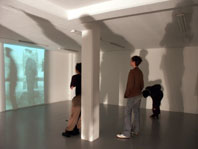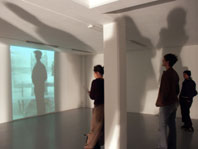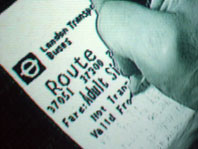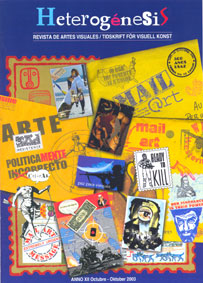 |
 |
 |
|
|
|
||
| “What
is the receipt to you? Is it rubbish? To me, it is meaningful, and important”
This simple statement about his receipt works is paradigmatic of the artistic
practice of Kentaro Hiroki, born in Osaka Japan.
Kentaro portrays his cultural journeys and exchanges through the series of receipt drawings. Since 1997, he has been collecting receipts from places he has visited and using them in his work. The receipts are derived from various contemporary spaces; bus, supermarket, museum, record shop, etc. The collective goods and services with space and time printed on each receipt mark as traces of our consuming behaviour: hints of subjectivity concerning social, cultural and economical value in today society. The essential, which underlines his work, proceeds from everyday conditions. The “receipt” is a symbol of a consumer, and can be used to observe how our identity are continuously constructed and reconstructed in the mass-market circulation. Therefore, copying receipt for Kentaro does not only depict the critical reflection between individual identity and the accumulation towards our daily basis in consumer society, but also it represents a certain irony towards ‘commodity life’ and ‘commodity art’ His act of copying receipt is experimented by different approaches ranging from hand drawing, sculpture, and installation. But for most of the actual-sized receipts he draws, he undergoes the intricate and fragile process of copying it by hand with absolute precision. The receipts are returned to their source in the process of making copy. But we see, not the memory of the original, but the mechanism by which they are produced. By using the slow crafting process, it can be seen that the artist performs an act of recollection. In this sense, it is the collective memory of which is not a detachment from the ready-made object and experience in the past, but a re-personalising process of the manually recreated receipts in the present. This is a profoundly delicate idea in his artistic works, which tries to combine an element of craftsmanship in order to put an overwhelming phenomenon of rapid industrialization of the World nowadays into question. Artist’s joke is that when he shows the piece for the first time without giving description of the work, nobody realises that the receipt is a hand-made copy!! As well as the receipt works, Kentaro explores the projection of shadows partakes of sculpture, photography, and video. The shadows also comprise the presence of the viewer in the exhibition space. Initially, his play of shadows fabricated from found objects; old photographs, and other discards. For this exhibition, he uses the old photograph of a young seaman, and a cab to start with. Then, he develops a single channel video piece and a small figure that links the narrative and materially coded element with each other, served to transform the viewer into a detective, generate to seek the curiosity for the young seaman’s stories. At the same time as in the video projection, the artist performs as a shadow of the young seaman walking in and out of his photographic body, it stresses to the importance of the construction and (re)construction of subjectivity since the shadow is alive, and refuses to belong to its original body. On one hands, it can be said that the artist dissolves in the photograph appeared to be the shadow in order to set himself as a mirror presenting the memory of the young seaman, theatricalized, and traced for what still remain absent in the image. In this way, while photography gives the proof of existence of the seaman, Kentaro uses the shadow to add one more element to it, that is the shadow as the proof of the co-existence between subjectivities and memories, which belong to him, the viewer, and the image itself. On the other hands, the separation of the shadows encourage the viewer to form a new kind of narrative as self-language building up collective stories from the objects which develop a system of references. Christian Boltanski writes about his play of shadows that they function like a mirror, which is not used to reflect the world. In fact, it uses to create archetypes in which everyone can recognize their own memories. Like Boltanski, Kentaro proposes his shadow works to observe the notion of subjectivity, which does not operate like a existent ready-made self being addressed by the outer world, but it has to be put in the constant process of construction and (re)construction. Theshadows, in this manner, do not cast as traces of absence like death, but a tool of testing an interaction between the self and the (other) selves.
|
||
 |
 |
 |


